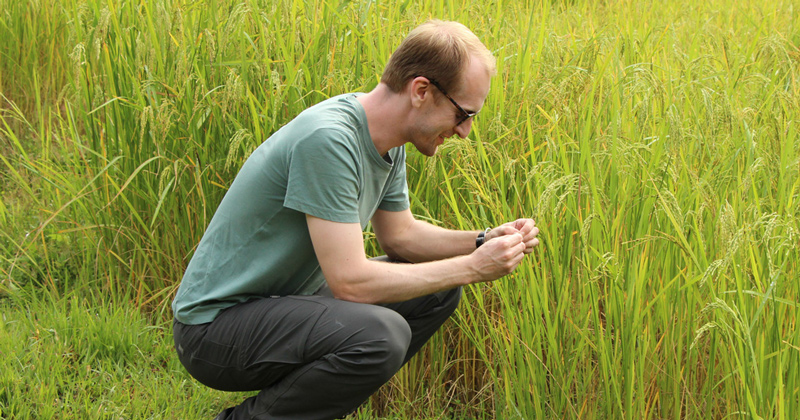


Food insecurity
Photo courtesy of Kyle Davis June 09, 2022
Despite sufficient crop harvests, UN food security goal remains elusive
The top 10 global crops — barley, cassava, maize/corn, palm oil, rapeseed/canola, rice, sorghum, soybean, sugar cane, and wheat — account for over 80% of all harvested crop calories.
Those crops are grown and harvested in sufficient total calories to meet food security demands, which will likely continue in the future. But not all harvested crop calories are used for direct food consumption. Increased competition for crops for other uses means a smaller fraction of harvested calories are available to feed people.
Kyle Davis is an assistant professor in the College of Earth, Ocean and Environment’s Department of Geography and Spatial Sciences and the College of Agriculture and Natural Resources’ Department of Plant and Soil Sciences, as well as a resident faculty member with University of Delaware’s Data Science Institute. Davis co-wrote a recent paper studying the implications of these other food uses that was published in Nature Food. University of Minnesota Senior Research Scientist Deepak Ray served as the lead author on the paper.
For the paper, the researchers mapped crop harvests for seven end-uses and found that harvests of crops for direct food use will be insufficient to meet the UN’s Sustainable Development Goal 2 (SD2) of food security for all by 2030.
Davis, who was involved in the conceptualization and writing of the study, said that the main implication of not reaching this goal is that “humanity will not be able to provide sufficient and nutritious food for all people on the planet if current crop production patterns persist.”
The maps show that, since the 1960s, the fraction of crops harvested for direct food consumption have decreased while harvest for processing (livestock feed, high fructose corn syrup, hydrogenated oils), export, and industrial use (ethanol, bioplastics, pharmaceuticals) have increased globally. If the trend continues to 2030, only about 26% of global calories harvested may be for direct food consumption.
Increasing wealth and the growing middle-class demand for high-value, processed foods, meat and dairy products, and other convenient commodities are creating increasing pressure for agricultural producers to specialize in high-yield crops specifically grown for uses other than direct food consumption.
“It is mainly economic incentives and food and agricultural policies that contribute to this shortfall,” said Davis. “These forces encourage the use of crops for purposes other than human consumption and contribute to humanity's inability to meet food security and nutrition goals. These historical changes in crop production have not prioritized food security and a reconfiguration of what motivates global crop production is urgently needed.”
As the agricultural sector responds to these consumer demands, food insecure populations are being overlooked. Especially in areas where those people are also trapped in poverty, specifically regions of Africa and Asia, but also elsewhere such as Haiti in the Caribbean.
The research determined that at least 31 countries will probably fail to meet their food needs by 2030, even if all in-country harvested calories were diverted to direct food consumption. An additional 17 countries will not be able to meet the food demands of their expected population growth in the same time frame, which will likely worsen the food insecurity burden on their undernourished populations.
“Our maps can be used to first understand why we harvest crops around the world, and see how it has changed and is changing further,” said Ray. “With this information, we can start creating sound policies that address food security needs at global and local levels, though it is not going to be easy. But at least we now have a starting point of viewing agriculture as it truly is.”
Solutions to global food insecurity are complex. Simply using more land for agricultural production leads to significant loss of natural landscapes that provide other ecological and sustainability benefits. Agriculture-sector livelihoods and economic justice depend on producers having choice over what to grow and where to sell their harvested product based on market influences.
The original announcement of this paper was published on the University of Minnesota’s Institute on the Environment website.
Contact Us
Have a UDaily story idea?
Contact us at ocm@udel.edu
Members of the press
Contact us at 302-831-NEWS or visit the Media Relations website

